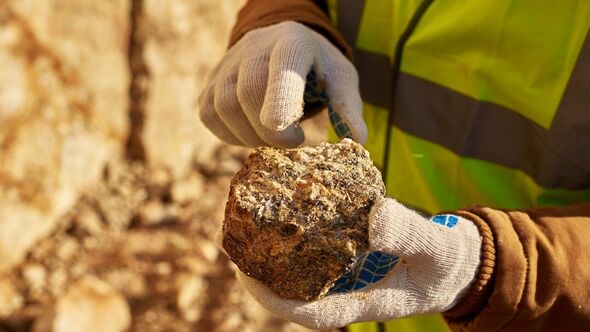Geologists in China have been stunned after finding a “supergiant” deposit of gold worth more than £65 billion.
According to Chinese state media, the astonishing precious metal reserve is more than 1,000 tonnes and has been found in Hunan Province, in the centre of the country.
The Geological Bureau said over 40 seams of gold of around 300 tonnes had been found within a depth of just over a mile underground in the Wangu gold field in Pingjiang County.
Chinese news outlet Xinhua said within around two miles a further estimated 1,000 tonnes had been identified. Chen Rulin, an ore-prospecting expert at the bureau, told Xinhua: “Many drilled rock cores showed visible gold.”
China is the biggest producer of gold in the world making up around 10 percent of global output in 2023.
Despite the massive output in gold production, the nation still reportedly consumes more than it mines and relies heavily on Australian and South African imports. In 2022, China mined 403 tonnes of gold.
By the end of 2023, globally an estimated total of 234,332 tonnes of gold had been dug up in human history, with more than two-thirds of this being extracted since 1950, according to the World Gold Council.
Countries like China and Russia have also been loading up on gold after the US froze Russian foreign currency reserves held overseas as punishment for Vladimir Putin‘s invasion of Ukraine.
Gold has an unmatchable history, with the first artefacts dating back to before 4,000 BCE. Over the centuries, everyone from Roman centurions to corrupt dictators has used it as a store of value.
Yet the precious metal has few practical or industrial uses. The price is mostly driven by jewellery demand and market sentiment, with investors buying the yellow metal, as they call it, as protection against hard times.
The idea is that even when currencies crash, gold will still be desirable.
